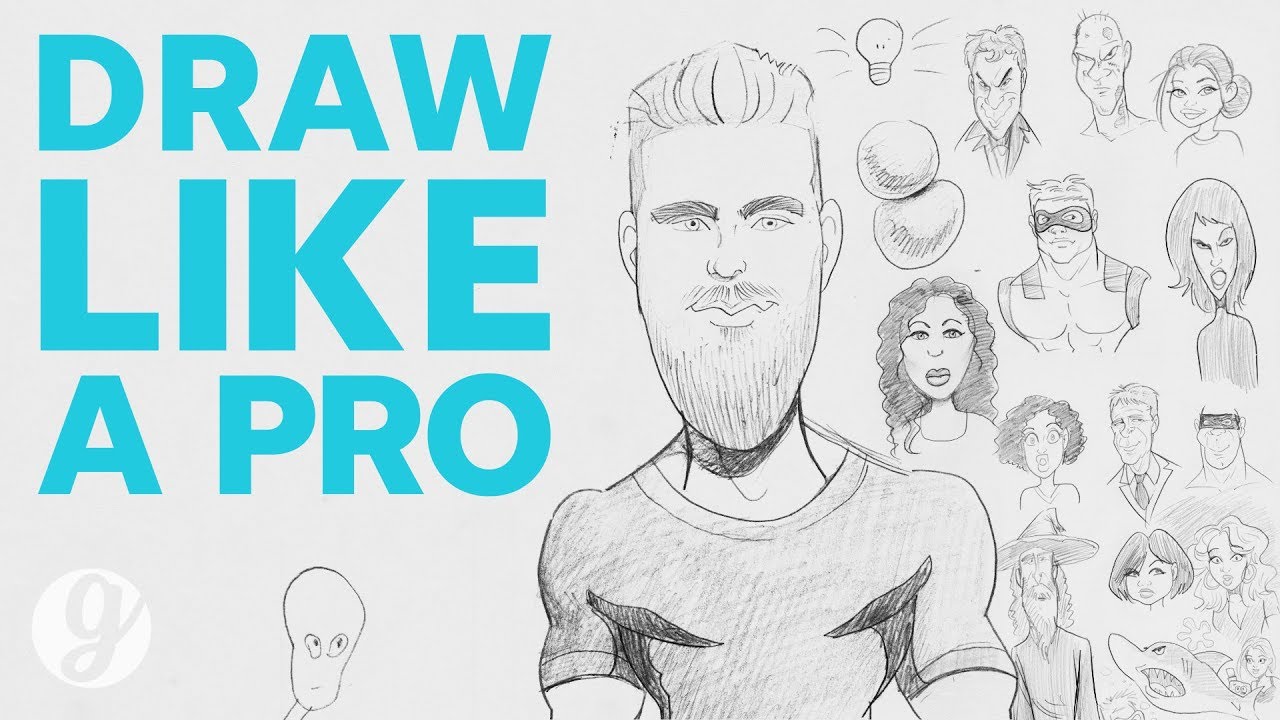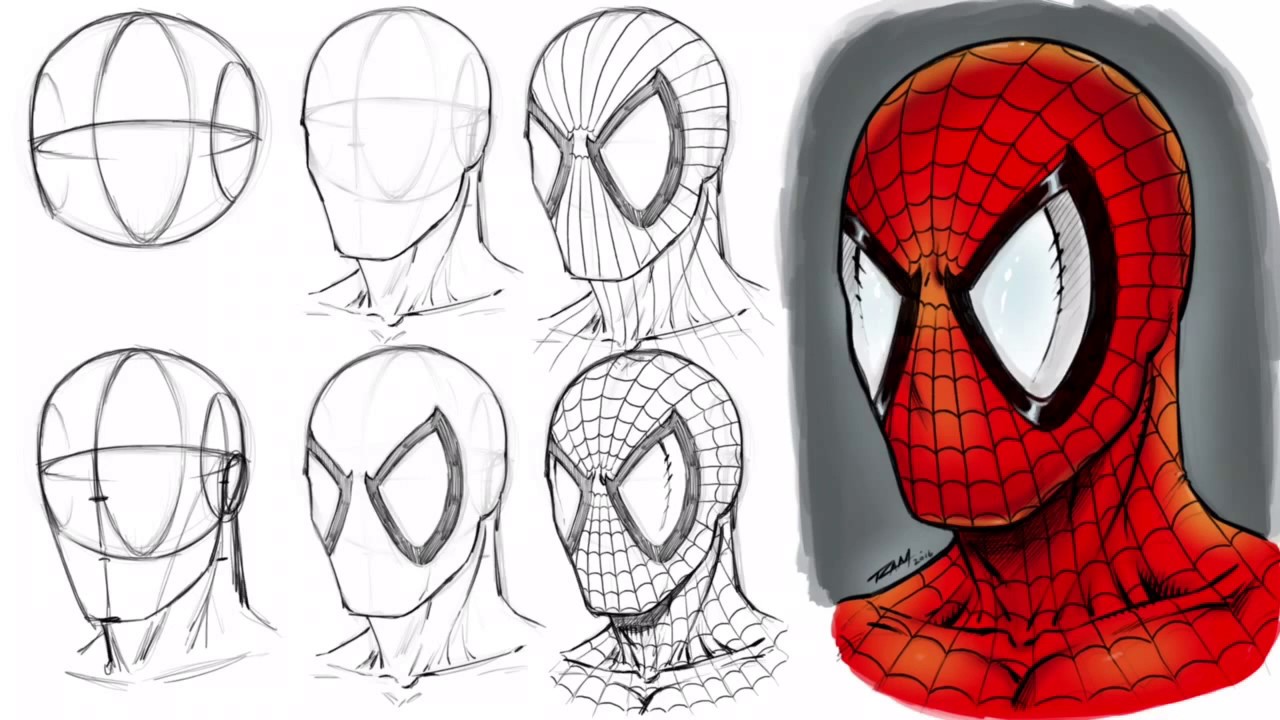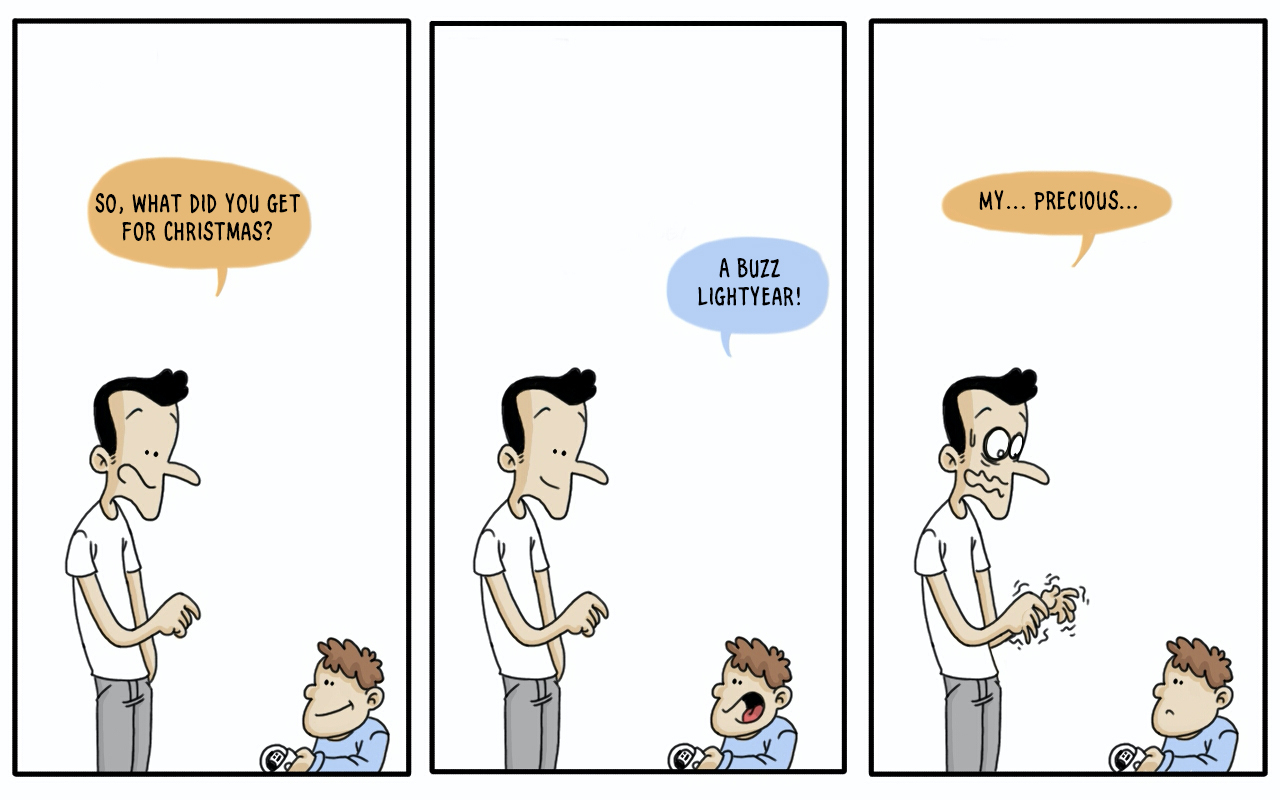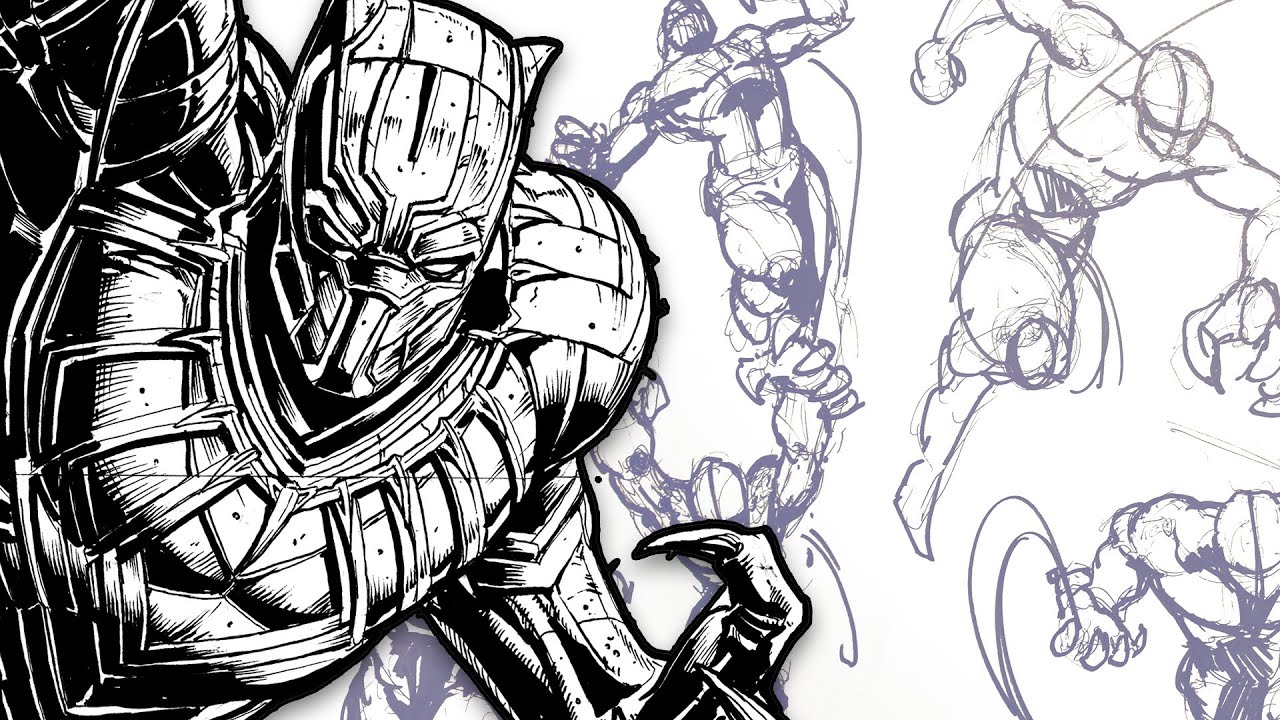Cara belajar menggambar komik opens the door to a vibrant world of creativity and storytelling. This guide provides a structured approach to mastering the art of comic creation, covering fundamental drawing skills, panel layout techniques, character development, and exploration of diverse artistic styles. Whether you’re a complete beginner or seeking to refine existing skills, this resource will equip you with the knowledge and tools to bring your comic book visions to life.
From understanding basic shapes and human anatomy to mastering dynamic action scenes and utilizing digital tools, we’ll navigate the entire comic-making process. We’ll explore various styles, from classic Western comics to expressive Manga, enabling you to develop a unique artistic voice. Prepare to embark on a journey that blends artistic exploration with narrative finesse.
Understanding Basic Drawing Fundamentals for Comic Art

Creating compelling comic art requires a solid foundation in drawing fundamentals. This section will explore essential techniques to help you build that foundation and develop your skills in character design, expression, and shading. Mastering these basics will significantly improve the overall quality and impact of your comic artwork.
Basic Shapes in Comic Character Design
The use of basic shapes – circles, squares, triangles, and their combinations – forms the cornerstone of character design. These simple shapes provide a foundational structure upon which more complex details can be built. Starting with a basic shape helps establish the character’s overall silhouette and proportions before delving into finer details like facial features and clothing. For example, a circle can form the head, a rectangle the torso, and cylinders the limbs. By manipulating and combining these shapes, you can create a wide variety of characters with unique forms and postures. This approach simplifies the drawing process and prevents early-stage design complexities.
Sketching Human Figures in Different Poses
Sketching human figures requires understanding anatomy and movement. Begin by lightly sketching a simple stick figure to establish the pose and proportions. Then, gradually add volume by building upon the stick figure using basic shapes. Consider the weight distribution and balance of the figure. For example, when sketching a figure running, the body will be leaning forward, with one leg extended and the other bent. Practice sketching figures in various dynamic poses, paying attention to the flow of the lines and the natural curves of the body. Observing real-life models or using reference images is invaluable in mastering human figure drawing. Start with simple poses and gradually increase complexity as your skills improve.
Creating Expressive Eyes and Facial Features
Eyes and facial features are crucial for conveying emotion in comic art. The shape and size of the eyes, the position of the eyebrows, and the curve of the mouth all play a significant role. Exaggeration is often used in comic art to enhance the expression. For example, large, wide eyes can convey surprise or fear, while narrowed eyes can suggest anger or suspicion. Experiment with different styles and techniques to find what works best for your artistic vision. Consider adding details like wrinkles, freckles, or scars to add personality and depth to your characters. Remember that even subtle changes in the features can drastically alter the expression.
Simple Shading Techniques to Add Depth
Shading is essential for adding depth and dimension to your drawings. Start with a light source in mind. Use hatching (parallel lines), cross-hatching (intersecting lines), and stippling (dots) to create different values of light and shadow. Gradually build up the shading, starting with light tones and adding darker values to create contrast. Observe how light falls on three-dimensional objects to understand how to accurately represent shadow and highlight. Blending techniques can create smoother transitions between light and dark areas. Experiment with different shading styles to find what best suits your artistic style and the mood of your comic.
Pencil Types and Their Uses in Comic Art
| Pencil Type | Hardness | Use Case | Example |
|---|---|---|---|
| HB | Medium | General sketching, outlining | Initial sketches, line art |
| 2B | Soft | Shading, darker lines | Adding shadows, defining features |
| 4B | Very Soft | Dark shading, bold lines | Creating strong contrasts, adding depth |
| 6B | Extra Soft | Very dark shading, intense lines | Deep shadows, dramatic effects |
Mastering Comic Book Panel Layout and Composition
Effective panel layout and composition are crucial for compelling storytelling in comics. They dictate the pacing, emphasis, and overall reader experience. A well-designed page guides the reader’s eye, creating a dynamic and engaging narrative flow. Understanding these principles elevates your comic from a series of illustrations to a truly immersive story.
Comic Page Layout Design
The following example illustrates a single comic page utilizing diverse panel sizes and arrangements to enhance storytelling. Imagine a six-panel page. The top left features a small, square panel depicting a character’s worried face, close-up. Next to it, a larger rectangular panel shows the source of their worry – a looming shadowy figure in the distance. Below the close-up, a wide, horizontal panel depicts the character’s environment, a bustling city street. The bottom left has a small, triangular panel showing a detail, perhaps a dropped object. The bottom right features a large, vertically oriented panel showcasing the character’s reaction – a dramatic pose of defiance. Finally, a small, circular panel in the top right shows a symbolic image representing the character’s inner turmoil, perhaps a flickering flame. This arrangement uses varying panel sizes to direct the reader’s attention, highlighting important details and creating a sense of progression and tension.
The Impact of Gutter Space on Storytelling
Gutter space, the white space between panels, significantly impacts the pacing and rhythm of a comic. Narrow gutters create a faster pace, suggesting a rapid succession of events, while wider gutters slow the pace, allowing the reader to linger on individual moments. For instance, a fight scene might utilize narrow gutters to convey the swiftness of the action, while a moment of reflection could employ wider gutters to emphasize the character’s internal state. The skillful manipulation of gutter space is a powerful tool for controlling the reader’s experience and emphasizing specific moments within the narrative.
Visual Storytelling Techniques: Perspective and Focal Points
Perspective and focal points are fundamental to visual storytelling. Perspective guides the reader’s eye and creates depth and realism. For example, using a high-angle shot can make a character appear vulnerable, while a low-angle shot can make them appear powerful. Focal points, the areas of the panel that immediately draw the reader’s attention, are often used to highlight important details or characters. A strategically placed focal point, achieved through contrast, color, or composition, ensures the reader sees what the artist intends them to see. Consider a panel showing a character standing in a crowded marketplace. The artist might use a shallow depth of field to blur the background and focus sharply on the character’s face, highlighting their emotional state.
Creating Dynamic Action Scenes Using Panel Transitions
Dynamic action scenes benefit from creative panel transitions. Techniques such as overlapping panels, which show consecutive moments of action with parts of the panels overlapping, create a sense of movement and continuity. Other techniques include using splash pages (large, single-panel images) to highlight dramatic moments and using smaller panels to depict rapid, successive actions. For instance, a car chase scene could use a series of small, horizontal panels to convey speed and movement, culminating in a splash page showing the car crashing. These techniques work together to build momentum and create a visually exciting sequence.
Common Panel Shapes and Their Effects
The shape of a panel can subtly influence the reader’s experience. Careful consideration of panel shape can enhance the narrative.
- Rectangular Panels: The most common shape, offering a neutral and versatile option.
- Square Panels: Suggest stability and balance.
- Circular Panels: Can emphasize a particular moment or character, drawing the reader’s focus.
- Triangular Panels: Suggest instability or tension.
- Irregular Panels: Used to create a sense of chaos or disorientation.
- Vertical Panels: Emphasize height or vertical movement.
- Horizontal Panels: Emphasize width or horizontal movement.
Developing Characters and Storytelling in Comics: Cara Belajar Menggambar Komik

Creating compelling characters and weaving a captivating narrative are crucial for successful comic storytelling. A well-developed character, with a relatable backstory and consistent personality, anchors the reader’s interest, while a strong narrative keeps them engaged from beginning to end. This section explores the essential elements of character development and storytelling techniques specific to the comic medium.
Character Sketches: Body Types and Personalities
Visual representation is paramount in comics. Character design effectively communicates personality and background through physical attributes. Consider a character sketch of a tall, slender individual with sharp features and perpetually intense eyes; this immediately suggests a character who might be analytical, perhaps even aloof or secretive. Contrast this with a shorter, more robust character with rounded features and a wide, friendly smile, who might be portrayed as approachable, jovial, and perhaps even a bit naive. Different body types and features, combined with clothing choices and posture, subtly (or overtly) reveal personality traits to the reader. For example, a character with hunched shoulders and downcast eyes might suggest sadness or insecurity, while a character with an upright posture and confident stance might project strength and self-assurance. These visual cues, skillfully employed, create a strong first impression and provide a foundation for the character’s narrative arc.
Developing a Compelling Character Backstory
A rich backstory doesn’t necessarily need to be explicitly shown in the comic; however, it profoundly impacts the character’s actions and motivations. Consider the character’s childhood, significant relationships, defining moments, and internal conflicts. For example, a seemingly cheerful character might be hiding a traumatic past that occasionally surfaces in their behavior or dialogue. Understanding a character’s history allows for more nuanced portrayals, providing depth and believability. The backstory doesn’t need to be revealed all at once; instead, it can be gradually unveiled through flashbacks, subtle hints, or interactions with other characters, adding layers of complexity and intrigue as the story progresses. A well-developed backstory ensures the character feels authentic and relatable, even if their personality is unconventional or extreme.
Character Expression and Body Language
Facial expressions and body language are vital tools for conveying emotions in the absence of extensive dialogue. A simple furrowed brow can express worry or anger, while wide, open eyes might convey surprise or fear. Similarly, slumped shoulders suggest dejection, while a clenched fist might indicate anger or determination. The skillful use of visual cues enhances the emotional impact of the narrative, making the characters’ feelings immediately apparent to the reader. Consider a character facing a difficult choice; their body language—a hesitant posture, a conflicted expression—can convey their internal struggle more effectively than any amount of dialogue. This visual storytelling strengthens the emotional connection between the reader and the character.
Effective Dialogue and Narrative Techniques
Dialogue should be concise and impactful, reflecting the characters’ personalities and the narrative’s tone. Avoid lengthy monologues; instead, prioritize short, sharp exchanges that move the story forward. Consider using thought bubbles or narration boxes to provide context or internal monologues, enriching the narrative without relying solely on dialogue. Effective narrative techniques include the use of visual metaphors, symbolism, and pacing to create a dynamic and engaging reading experience. For instance, a series of increasingly dark panels might symbolize a character’s descent into despair, while a rapid succession of smaller panels could depict a fast-paced action sequence. The combination of well-crafted dialogue and strategic narrative choices creates a seamless and immersive reading experience.
A Simple Comic Strip: Visual Storytelling
[The following describes a three-panel comic strip. Panel 1 shows a small, lonely-looking robot sitting in a dark corner, its head bowed. Its body is metallic grey, with a few dents and scratches suggesting wear and tear. The background is a simple, dimly lit room. Panel 2 shows a small child approaching the robot cautiously, offering it a brightly colored toy. The child is depicted with a kind expression, and their posture suggests gentleness. The background remains the same dimly lit room. Panel 3 shows the robot and the child together, the robot now upright with a faint smile on its usually expressionless face, holding the toy. The child’s smile has widened, and they are both looking at each other with affection. The room still retains the same dim lighting but now seems a little warmer and less desolate. The overall color palette shifts subtly from cold greys and dark blues in the first panel to warmer yellows and oranges in the final panel, reflecting the change in mood.]
Exploring Different Comic Art Styles and Techniques

The world of comic art boasts a breathtaking diversity of styles, each with its unique characteristics and expressive capabilities. Understanding these styles—from the dynamic lines of manga to the painterly realism of some Western comics—is crucial for developing your own distinctive artistic voice. This section explores several prominent styles, examining their key elements and demonstrating how to adapt and blend them for creative character design and storytelling.
Different comic art styles are defined by a combination of linework, shading techniques, character design conventions, and overall aesthetic choices. These stylistic elements often reflect cultural influences and the intended tone or genre of the comic itself. Mastering these variations allows artists to effectively convey emotion, mood, and narrative information.
Learning to draw comics requires patience and practice; honing your skills takes time. A helpful way to improve hand-eye coordination, crucial for drawing, is through quick reaction games like the Permainan memotong buah cepat. Improving dexterity in this way can translate to more precise and fluid linework in your comic art, ultimately enhancing your overall drawing ability.
Comparison of Popular Comic Art Styles
A comparative analysis reveals the distinct features of various popular styles. We will focus on three major styles: Manga, Western Comics, and European Comics, highlighting their differences and similarities in linework, shading, and character design.
| Style Name | Key Features | Example Artist | Image Description |
|---|---|---|---|
| Manga | Dynamic linework, often exaggerated features (eyes, hair), cel-shading, emphasis on expressive eyes and poses. | Eiichiro Oda (One Piece) | A vibrant, detailed image depicting a character with large, expressive eyes, flowing hair, and dynamic action lines. The colors are bold and flat, typical of cel-shading. The overall style is energetic and expressive. |
| Western Comics | Wide range of styles, from realistic to highly stylized; varied line weights, detailed rendering, often uses cross-hatching or stippling for shading. | Frank Miller (Sin City) | A gritty, black-and-white image with stark contrasts and highly detailed linework. The characters are realistically proportioned, with strong emphasis on musculature and texture. The shading utilizes heavy cross-hatching and bold blacks to create a dark and moody atmosphere. |
| European Comics (Bande Dessinée) | Often more realistic or painterly style; emphasis on detailed backgrounds and atmospheric perspective; less emphasis on dynamic action lines compared to Manga or some Western styles. | Hergé (The Adventures of Tintin) | A clear, detailed image with a focus on realistic proportions and backgrounds. The linework is clean and precise, with a focus on creating a sense of depth and atmosphere. The colors are often more muted and realistic compared to Manga or some Western comic styles. |
Adapting and Blending Comic Art Styles
The beauty of artistic expression lies in the ability to adapt and blend different styles. By combining elements from various approaches, artists can craft unique character designs and visual narratives. For instance, an artist might incorporate the expressive eyes of Manga with the detailed rendering of Western comics, creating a hybrid style that is both dynamic and visually rich.
Inking Techniques for Varied Effects
Inking is a crucial step in comic art, and different techniques can significantly impact the final look and feel of the artwork. The weight, texture, and application of ink can dramatically alter the mood and tone of the piece.
For example, using a fine-tipped pen for detailed linework can create a sense of precision and realism, while using a brush pen can produce a more expressive and painterly effect. Varying line weights can also add depth and dimension to the artwork, while techniques like hatching and cross-hatching can be used to create shading and texture. Experimentation with different inking tools and techniques is key to finding one’s personal style.
Learning to draw comics can be a rewarding journey, requiring dedication and practice. A great resource for those starting out is a comprehensive guide on the subject, such as the one found here: Cara belajar menggambar komik. This guide offers valuable insights into various aspects of comic creation, from character design to storytelling techniques, ultimately helping you improve your skills in creating compelling visual narratives.
Mastering the art of comic drawing takes time, but with consistent effort and the right resources, you can achieve your goals.
Inking, Coloring, and Digital Tools for Comic Art

Bringing your comic sketches to life involves a crucial stage: inking and coloring. This process transforms your pencil lines into the sharp, defined artwork that readers will see. Whether you prefer traditional methods or embrace the digital realm, understanding the techniques and tools involved is essential for creating professional-looking comics.
Traditional Inking Techniques
Traditional inking involves using various inks and brushes to create clean, consistent lines over your pencil sketches. This meticulous process requires patience and practice to achieve the desired level of detail and style. The choice of ink and brush significantly impacts the final look of your artwork, from bold, heavy lines to delicate, fine strokes. Common techniques include outlining panels, adding details, and creating textures. Inking is a critical step in establishing the overall visual style and mood of your comic.
Ink and Brush Types for Traditional Inking
A variety of inks and brushes are available for traditional inking, each offering unique characteristics. India ink, known for its archival quality and deep black, is a popular choice. Other options include pigmented inks, which offer greater vibrancy and are less likely to feather on the paper. Regarding brushes, artists often utilize dip pens with various nib sizes for different line weights, or brush pens for more flexible and expressive lines. Rapidograph technical pens provide precise, consistent lines ideal for technical details. The choice depends on the artist’s preferred style and the level of detail required.
Traditional and Digital Coloring Techniques
Coloring significantly enhances the visual appeal of a comic, establishing mood, character, and setting. Traditional methods often involve watercolors, acrylics, or colored pencils, each providing unique textural and blending capabilities. Watercolors allow for soft, blended transitions, while acrylics offer bolder, more opaque colors. Colored pencils are suitable for detailed work and fine lines. Digital coloring, using software like Photoshop or Clip Studio Paint, provides unparalleled control and flexibility. Digital techniques often involve layering colors, using various blending modes, and applying digital textures to achieve a wide range of effects. For instance, a digital artist might use a watercolor brush effect in their software to mimic the look of traditional watercolors, while simultaneously enjoying the advantages of easy correction and undo functionality.
Utilizing Digital Tools for Comic Creation
Digital tools have revolutionized comic creation, offering efficiency, flexibility, and a vast array of creative possibilities. Software like Photoshop and Clip Studio Paint provide comprehensive features for sketching, inking, coloring, lettering, and page layout. These programs allow for non-destructive editing, meaning changes can be made without permanently altering the original artwork. Digital tools also offer a range of brushes, textures, and effects that can be used to create unique visual styles. The use of layers in digital software allows for easy separation of elements such as line art, color, and text, streamlining the workflow and making revisions simple.
Essential Digital Tools and Software for Comic Creation, Cara belajar menggambar komik
Digital comic creation relies heavily on the right software and tools. A powerful computer with sufficient RAM and processing power is essential to handle large files and complex operations. A graphics tablet with pressure sensitivity is crucial for creating natural-looking lines and brush strokes.
- Software: Adobe Photoshop, Clip Studio Paint, Procreate, Affinity Photo
- Hardware: Graphics tablet (Wacom Intuos, Huion Kamvas), high-resolution display monitor
- Other Tools: Scanning equipment (for integrating traditional artwork), a stylus or pen for the tablet.
Conclusion
Creating compelling comics is a rewarding blend of artistic skill and storytelling prowess. This guide has provided a roadmap through the essential steps, from foundational drawing techniques to the nuances of panel layout and character development. By mastering these elements and experimenting with diverse styles and digital tools, you’ll be well-equipped to translate your creative visions into engaging and impactful comic narratives. The journey of a thousand panels begins with a single stroke – so start drawing!